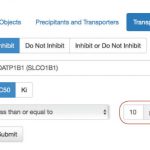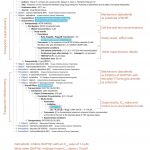The human in vitro datasets contain results from both metabolism and transporter studies.
Metabolism and Transport datasets
The human in vitro datasets contain results where a drug is tested as an inhibitor/activator/inducer (precipitant) or a substrate (object) for a given human drug metabolizing enzyme or transporter (including variants).
Kinetic parameters (such as Papp, efflux ratio, uptake ratio, CLint, Km, and Vmax), inhibition and induction values (such as IC50, Ki, % inhibition or fold increase, Emax, and others) and in vitro-to-in vivo prediction ratios per FDA DDI guidance, are extracted from published citations and NDA/BLA reviews. Additionally, detailed experimental conditions (cell type, precipitant and substrate concentrations, etc.) are included for each study.
Study results are organized according to the overall effect and mechanism of the interaction and includes negative study results (classified as a non-inhibitor, non-inducer, or non-activator as appropriate). This data capture not only the effect on the drug as a substrate, but for the drug as a perpetrator as well.
Multiple queries allow users to retrieve an in vitro dataset by drug name, enzyme name, or mechanism of the interaction (drug as precipitant or as object).
Results can be viewed, customized, and downloaded in multiple formats, allowing users to compile and organize the large body of information available.
- In vitro transporter query form
- In vitro transporter query results
- In vitro transporter study details
Work faster and smarter
What subscribers are using the human in vitro datasets for:
- PROVIDE CONTEXT for RESULTS OBTAINED for candidate compounds
- ALLOW ASSESSMENT of MEASUREMENT VARIABILITY
inter-lab, substrate- and system-dependency, etc. - SUPPORT STATIC PREDICTIONS and PBPK MODELING
with input parameters - HELP OPTIMIZE HUMAN IN VITRO STUDY DESIGN
cell system, incubation conditions, test concentrations, choice of substrate/inhibitor, etc. - ASSIST with DOSE SELECTION for clinical trials
- PROVIDE IN VITRO EVIDENCE to EXPLAIN CLINICAL RESULTS and improve understanding of drug interaction mechanisms


